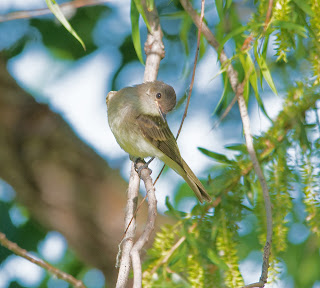Translate
Sunday, July 26, 2020
Saturday, July 25, 2020
Friday, July 24, 2020
072420 Support Another Birder Today
As birders, we share an obligation to care about and support each other. Let's make a pact to do that, because a little love goes a long way.
https://10cast.county10.com/fehring-in-the-field-day-scott-birder-and-writer/
https://10cast.county10.com/fehring-in-the-field-day-scott-birder-and-writer/
Wednesday, July 22, 2020
Monday, July 20, 2020
Monday, July 13, 2020
Sunday, July 12, 2020
Green Heron 2020 Adults and Juvenile
070820 Green Heron Juvenile
070920 Green Heron Subadult
Green Heron Adult
Green Heron Juvenile
071220 Eastern Phoebe Juvenile
On April 8, two Green Heron juveniles were observed at the colony on Heron Cove. The nest was in their normal central tree, but to combat the excessive heat, the young were moved lower by the adults and subadult near the water to achieve maximum cooling properties. There is also a second nest in the right hand tree, with the same safety elements in mind.
Today we found an Eastern Phoebe family with three juveniles and one adult. This was one of the young charges, but they were hard to keep effectively corralled.
There's plenty more where that came from!
Saturday, July 11, 2020
Great Egret Portraiture
Great Egret 1
Great Egret 2
Great Egret 3
Great Egret 4
Great Egret 5
Great Egret 6
Great Egret 7
Great Egret 8
Having a photo shoot with a wild animal can be challenging as we see here. Rarely are these animals in such a location where we can take advantage of lighting and other natural habitat. This is the month where the heat index is clearly against us even in the earlier hours of the day. Once the sun rises, we are at its mercy. However, if one is fortunate enough to be in the shade during these escapades, life becomes a little better.
But when the subject decides to feed, the shoot is over.
Monday, July 6, 2020
Sunday, July 5, 2020
Thursday, July 2, 2020
June and Its Inherent Beauty of Bird Life
060920 Bell's Vireo
061120 Eastern Phoebe
Eastern Phoebe 2
061520 Scissor-tailed Flycatcher
061820 Green Heron Adult
070220 Alligator Snapping Turtle
and Channel Catfish
Bell's Vireo has been increasingly active this year, as well as adding an extra bird to the fold, so to speak. This was a former youngster of Bell's 1, an original northeast breeder, no longer living. This current adult came to us courtesy of construction involving added electrical lines and the supports. While last year saw much removal of Bell's 1's territory, it simply moved to a new location apparently with either a juvenile in tow with hatched eggs south of the original location, of course temporarily out of service.
This new territory became Bell 1A's neighboring territory to Bell 1's south border. There is technically speaking, no territory north of that, which remains Bell 2's extended region, and it sometimes visits, but its main territory is north of Airport Rd. Bell 1 never visits this unoccupied area, which may become territory for another Bell's Vireo.
The above photo shows the male Bell 1A, who temporarily took a rare hiatus from his birthplace.
The above Eastern Phoebe, a sassy juvenile, tends to visit this extended area across from Kicker or Stillwater Designs where it hunts and could eventually nest.
The Scissor-tailed Flycatcher shown, especially for those readers not in Oklahoma, see a classic example of a neotropical migrant. This beautiful specimen is clearly a bird of the tropical forest with its bright coloring. Its tantalizing hues are actually a very subdued example of how it would look to another bird viewing it in the ultraviolet spectrum. As most of humanity is limited to the visible spectrum, people with a rare condition known as aphakia do possess natural ultraviolet vision. Birds usually have one extra cone that we lack, prohibiting normal vision from detecting the increased intensity of the ultraviolet spectrum.
This colorful adult Green Heron is obviously a member of the heron family, which also includes egrets. An egret is a heron, but a heron is not an egret. Ponder that thought...
The photo of the month is clearly this example of an alligator snapping turtle upon its prey, a channel catfish. As writer was on the way to Boomer Lake, an oddly moving channel cat caught my eye. It was eventually learned to be in motion due to the foraging turtle, who was consuming. However, it remains a mystery as to whether or not this turtle caused the demise of the catfish. It could well have been involved in cleanup detail, which is normal for these scavengers.
Subscribe to:
Comments (Atom)


















